The automotive landscape is continuously evolving, with brands striving to push the envelope on performance, efficiency, and technology. In this comparison, we delve into two standout entries in the compact SUV segment: the BMW X1 and the CUPRA Terramar. Each vehicle brings its own unique flair while being equipped with innovative features and impressive technical specifications.
BMW X1 vs CUPRA Terramar – Performance, range & efficiency compared
Everyday use, family trips or long-distance drives – here’s where the differences show.
Discover whether BMW X1 or CUPRA Terramar fits your lifestyle better.
Design and Dimensions
The BMW X1 captivates with its signature BMW design language, showcasing a muscular stance with a bold front grille and sleek lines. It measures approximately 4500 mm in length, 1845 mm in width, and stands at a height of up to 1642 mm, ensuring a commanding presence on the road.
On the other hand, the CUPRA Terramar offers a slightly larger footprint, measuring 4519 mm in length and 1869 mm in width, with a height of 1586 mm. This SUV exudes a sportier character, featuring aggressive styling and distinctive CUPRA branding that sets it apart from traditional SUVs.
Performance Metrics
The performance of these vehicles is a critical factor for many buyers. The BMW X1 offers a range of engine options, including diesels and petrols with outputs soaring up to 326 HP. Acceleration is impressive across the board, with top variants reaching 0-100 km/h in just 5.4 seconds. It also has an electric range of up to 83 km for its plugin hybrid models, coupled with a fuel consumption as low as 4.6 L/100km.
The CUPRA Terramar, on the flipside, is no slouch. With its performance-oriented plug-in hybrid and petrol MHEV options, it boasts a maximum output of 272 HP and can accelerate from 0-100 km/h in a brisk 5.3 seconds. The Terramar also offers a superior electric-only range, with its plugin hybrid variant achieving up to 120 km, while maintaining fuel consumption figures as low as 0.4 L/100km.
Technological Innovations
Both vehicles are equipped with cutting-edge technology designed to enhance the driving experience. The BMW X1 features a high-resolution infotainment system with seamless smartphone integration, advanced driver assistance systems, and a sophisticated navigation system. Innovations like adaptive cruise control and lane-keeping assist are standard on many models.
CUPRA does not lag behind in this aspect. The Terramar integrates a similarly advanced infotainment system, providing drivers with real-time traffic information and extensive connectivity options. Additionally, it includes features such as adaptive suspension and selectable drive modes that cater to different driving styles, allowing for a more personalized experience.
Interior and Comfort
Inside, the BMW X1 offers a premium environment. Quality materials, ample space, and a user-friendly layout ensure comfort for all passengers, making it an ideal choice for long journeys. With a trunk capacity of up to 540 liters, it provides ample room for luggage and leisure equipment.
The CUPRA Terramar also emphasizes comfort with a sport-inspired interior, featuring supportive seating and high-quality finishes. While its trunk capacity matches that of the X1, the overall driving position and interior layout are designed to evoke a sense of sportiness, ensuring that both comfort and performance are prioritized.
Efficiency and Sustainability
Both brands are aware of the growing demand for eco-friendly vehicles. The BMW X1’s plugin hybrid variant is designed to minimize emissions, offering a CO2 efficiency class rated as low as B, with an impressive electric range available for urban driving. The overall fuel efficiency and CO2 emissions figures make it a compelling choice for the environmentally conscious consumer.
The CUPRA Terramar takes a similar approach, notably with its hybrid systems that allow for lower emissions (as low as 10 g/km) and sustainable driving options. With the Terramar, there’s also a significant emphasis on driving enjoyment, proving that efficiency doesn’t have to come at the expense of performance.
Conclusion
In the battle of the compact SUVs, both the BMW X1 and CUPRA Terramar have their strengths. The X1 excels with its premium features, extensive engine lineup, and robust technology, making it appealing for those who value traditional luxury in an SUV package. On the other hand, the CUPRA Terramar brings a fresh, sporty edge with outstanding plug-in hybrid capabilities and a strong performance focus.
Your ultimate choice will depend on your personal priorities—whether you lean more toward luxury and comfort or sportiness and dynamic drive characteristics. Either way, both SUVs represent significant advancements in their class, making them worthy contenders in the ever-competitive automotive market.
Here’s where it gets real: The technical differences in detail
Costs and Efficiency:
When it comes to price and running costs, the biggest differences usually appear. This is often where you see which car fits your budget better in the long run.
CUPRA Terramar has a barely noticeable advantage in terms of price – it starts at 36900 £, while the BMW X1 costs 38200 £. That’s a price difference of around 1354 £.
Fuel consumption also shows a difference: CUPRA Terramar manages with 0.40 L and is therefore decisively more efficient than the BMW X1 with 0.80 L. The difference is about 0.40 L per 100 km.
As for range, the CUPRA Terramar performs clearly perceptible better – achieving up to 120 km, about 37 km more than the BMW X1.
Engine and Performance:
Power, torque and acceleration are the classic benchmarks for car enthusiasts – and here, some clear differences start to show.
When it comes to engine power, the BMW X1 has a to a small extent edge – offering 326 HP compared to 272 HP. That’s roughly 54 HP more horsepower.
In acceleration from 0 to 100 km/h, the BMW X1 is minimal quicker – completing the sprint in 5.40 s, while the CUPRA Terramar takes 5.90 s. That’s about 0.50 s faster.
In terms of top speed, the BMW X1 performs hardly perceptible better – reaching 250 km/h, while the CUPRA Terramar tops out at 243 km/h. The difference is around 7 km/h.
There’s also a difference in torque: BMW X1 pulls somewhat stronger with 477 Nm compared to 400 Nm. That’s about 77 Nm difference.
Space and Everyday Use:
Cabin size, boot volume and payload all play a role in everyday practicality. Here, comfort and flexibility make the difference.
Both vehicles offer seating for 5 people.
In curb weight, BMW X1 is slight lighter – 1575 kg compared to 1638 kg. The difference is around 63 kg.
Boot capacity is identical – both offer 540 L of storage.
When it comes to payload, CUPRA Terramar barely noticeable takes the win – 542 kg compared to 500 kg. That’s a difference of about 42 kg.
Who comes out on top?
Overall, the CUPRA Terramar shows itself to be outperforms in nearly all aspects and secures the title of DriveDuel Champion.
It convinces with the more balanced overall package and proves to be the more versatile choice for everyday use.
 @ CUPRA / SEAT S.A.
@ CUPRA / SEAT S.A.
CUPRA Terramar
BMW X1
The BMW X1 brings a premium feel to compact crossover life, wrapping practical space and agile handling into a tidy, upscale package. It’s ideal for buyers who want BMW driving dynamics without the bulk, offering everyday comfort and a few clever tricks to keep the commute interesting.
details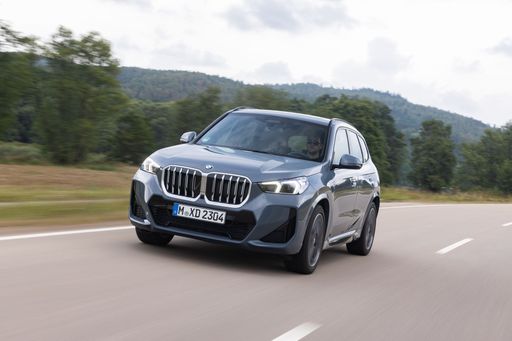 @ BMW Group Press
@ BMW Group Press
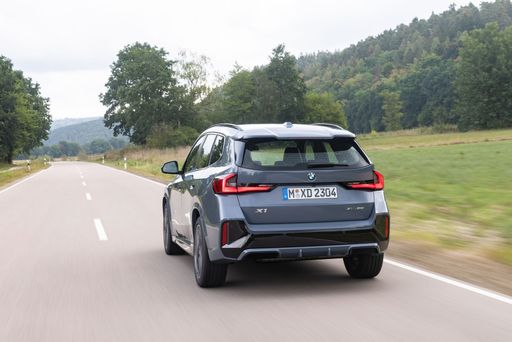 @ BMW Group Press
@ BMW Group Press
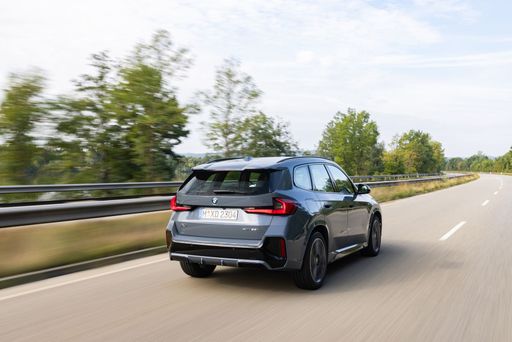 @ BMW Group Press
@ BMW Group Press
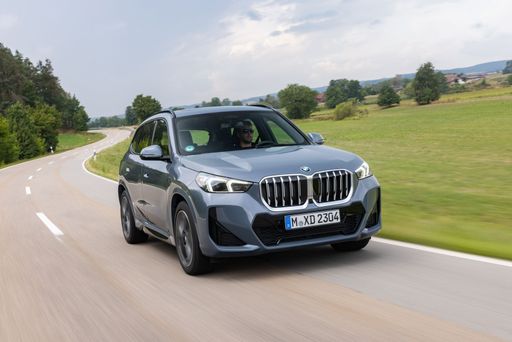 @ BMW Group Press
@ BMW Group Press
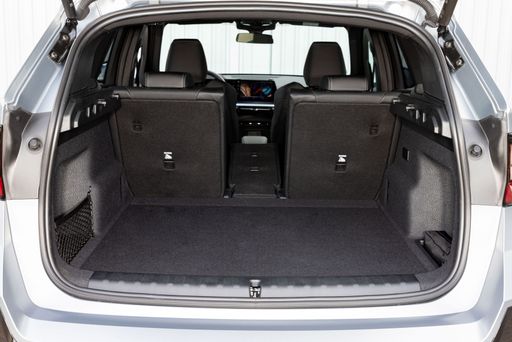 @ BMW Group Press
@ BMW Group Press
CUPRA Terramar
The CUPRA Terramar is a sharply styled, sporty SUV that brings athletic handling and bold design to buyers who want performance with everyday usability. Inside, premium finishes meet driver-focused flair and family-friendly practicality, making it a tempting pick for anyone who wants thrills without turning their daily routine into a chore.
details @ CUPRA / SEAT S.A.
@ CUPRA / SEAT S.A.
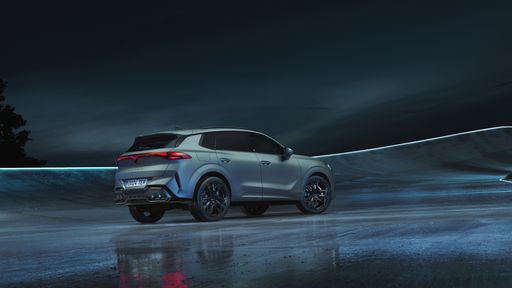 @ CUPRA / SEAT S.A.
@ CUPRA / SEAT S.A.
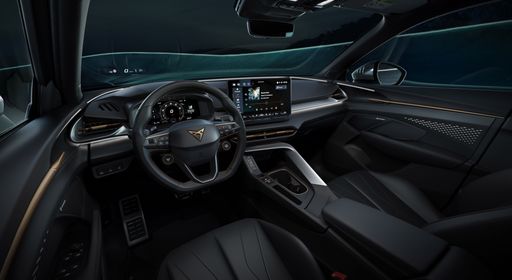 @ CUPRA / SEAT S.A.
@ CUPRA / SEAT S.A.
 @ BMW Group Press
@ BMW Group Press
|
 @ CUPRA / SEAT S.A.
@ CUPRA / SEAT S.A.
|
|
|
|
Costs and Consumption |
|
|---|---|
|
Price
38200 - 55500 £
|
Price
36900 - 49300 £
|
|
Consumption L/100km
0.8 - 7.7 L
|
Consumption L/100km
0.4 - 8.4 L
|
|
Consumption kWh/100km
-
|
Consumption kWh/100km
-
|
|
Electric Range
83 km
|
Electric Range
120 km
|
|
Battery Capacity
14.20 kWh
|
Battery Capacity
19.70 kWh
|
|
co2
17 - 175 g/km
|
co2
10 - 191 g/km
|
|
Fuel tank capacity
47 - 54 L
|
Fuel tank capacity
45 - 60 L
|
Dimensions and Body |
|
|---|---|
|
Body Type
SUV
|
Body Type
SUV
|
|
Seats
5
|
Seats
5
|
|
Doors
5
|
Doors
5
|
|
Curb weight
1575 - 1935 kg
|
Curb weight
1638 - 1904 kg
|
|
Trunk capacity
490 - 540 L
|
Trunk capacity
450 - 540 L
|
|
Length
4500 - 4505 mm
|
Length
4519 mm
|
|
Width
1845 mm
|
Width
1869 mm
|
|
Height
1622 - 1642 mm
|
Height
1586 mm
|
|
Max trunk capacity
1495 - 1600 L
|
Max trunk capacity
-
|
|
Payload
490 - 500 kg
|
Payload
512 - 542 kg
|
Engine and Performance |
|
|---|---|
|
Engine Type
Diesel MHEV, Petrol MHEV, Plugin Hybrid, Petrol, Diesel
|
Engine Type
Plugin Hybrid, Petrol MHEV, Petrol
|
|
Transmission
Automatic
|
Transmission
Automatic
|
|
Transmission Detail
Dual-Clutch Automatic
|
Transmission Detail
Dual-Clutch Automatic
|
|
Drive Type
Front-Wheel Drive, All-Wheel Drive
|
Drive Type
Front-Wheel Drive, All-Wheel Drive
|
|
Power HP
136 - 326 HP
|
Power HP
150 - 272 HP
|
|
Acceleration 0-100km/h
5.4 - 9.2 s
|
Acceleration 0-100km/h
5.9 - 9.3 s
|
|
Max Speed
190 - 250 km/h
|
Max Speed
205 - 243 km/h
|
|
Torque
230 - 477 Nm
|
Torque
250 - 400 Nm
|
|
Number of Cylinders
3 - 4
|
Number of Cylinders
4
|
|
Power kW
100 - 240 kW
|
Power kW
110 - 200 kW
|
|
Engine capacity
1499 - 1998 cm3
|
Engine capacity
1498 - 1984 cm3
|
General |
|
|---|---|
|
Model Year
2023 - 2025
|
Model Year
2024
|
|
CO2 Efficiency Class
D, E, B, F
|
CO2 Efficiency Class
B, E, G, F
|
|
Brand
BMW
|
Brand
CUPRA
|
Is the BMW X1 offered with different drivetrains?
The BMW X1 is offered with Front-Wheel Drive or All-Wheel Drive.
The prices and data displayed are estimates based on German list prices and may vary by country. This information is not legally binding.
